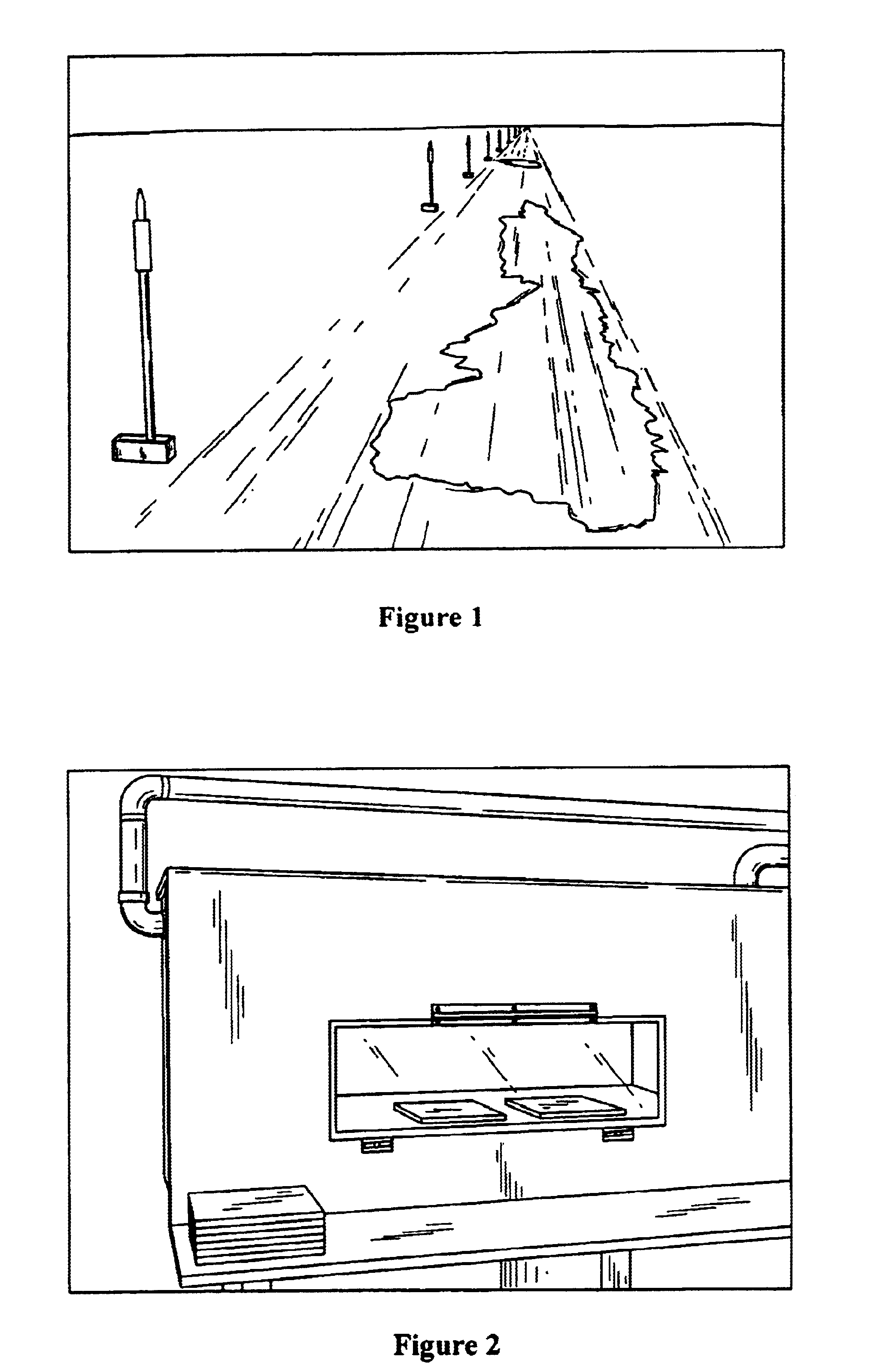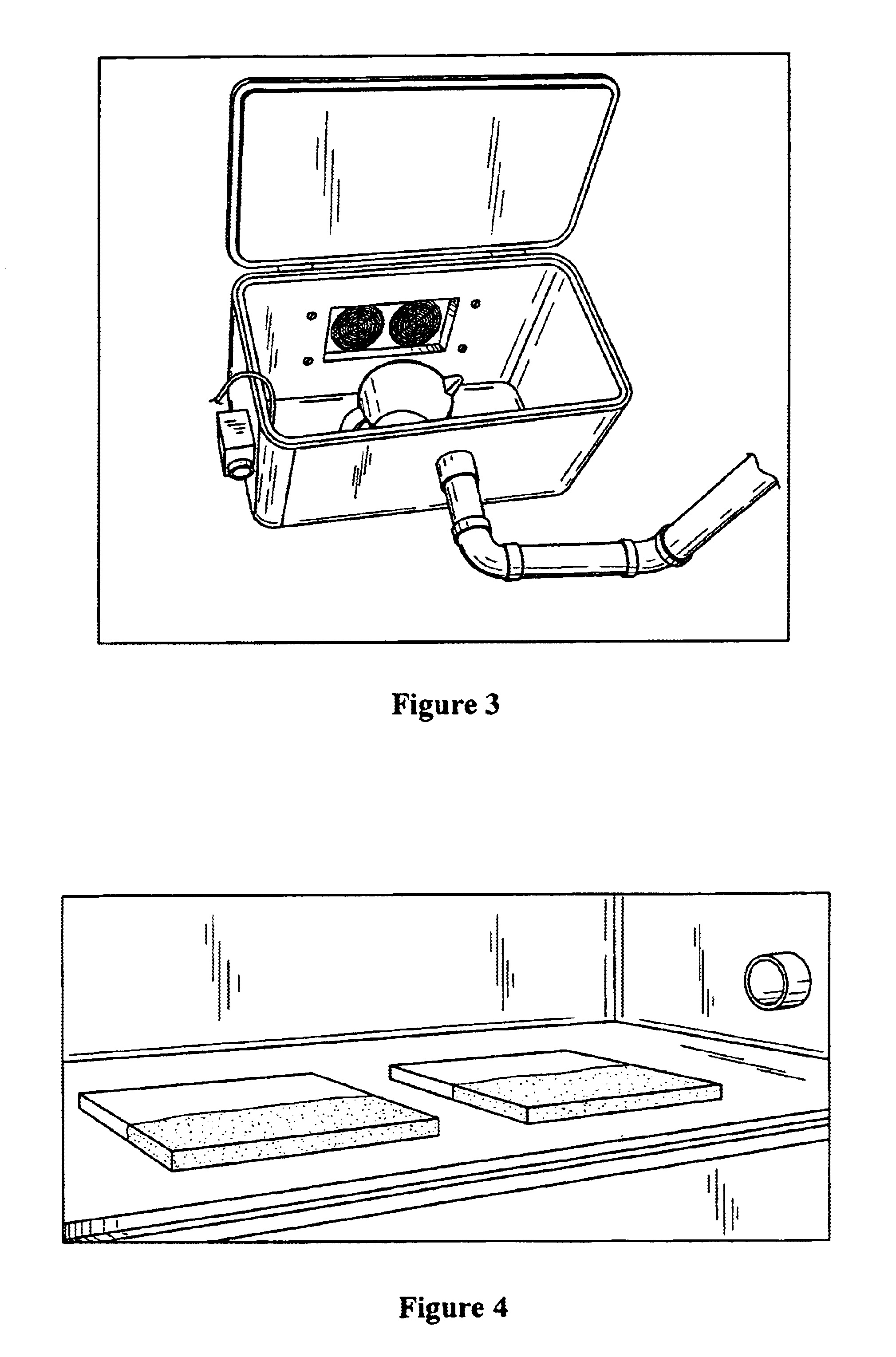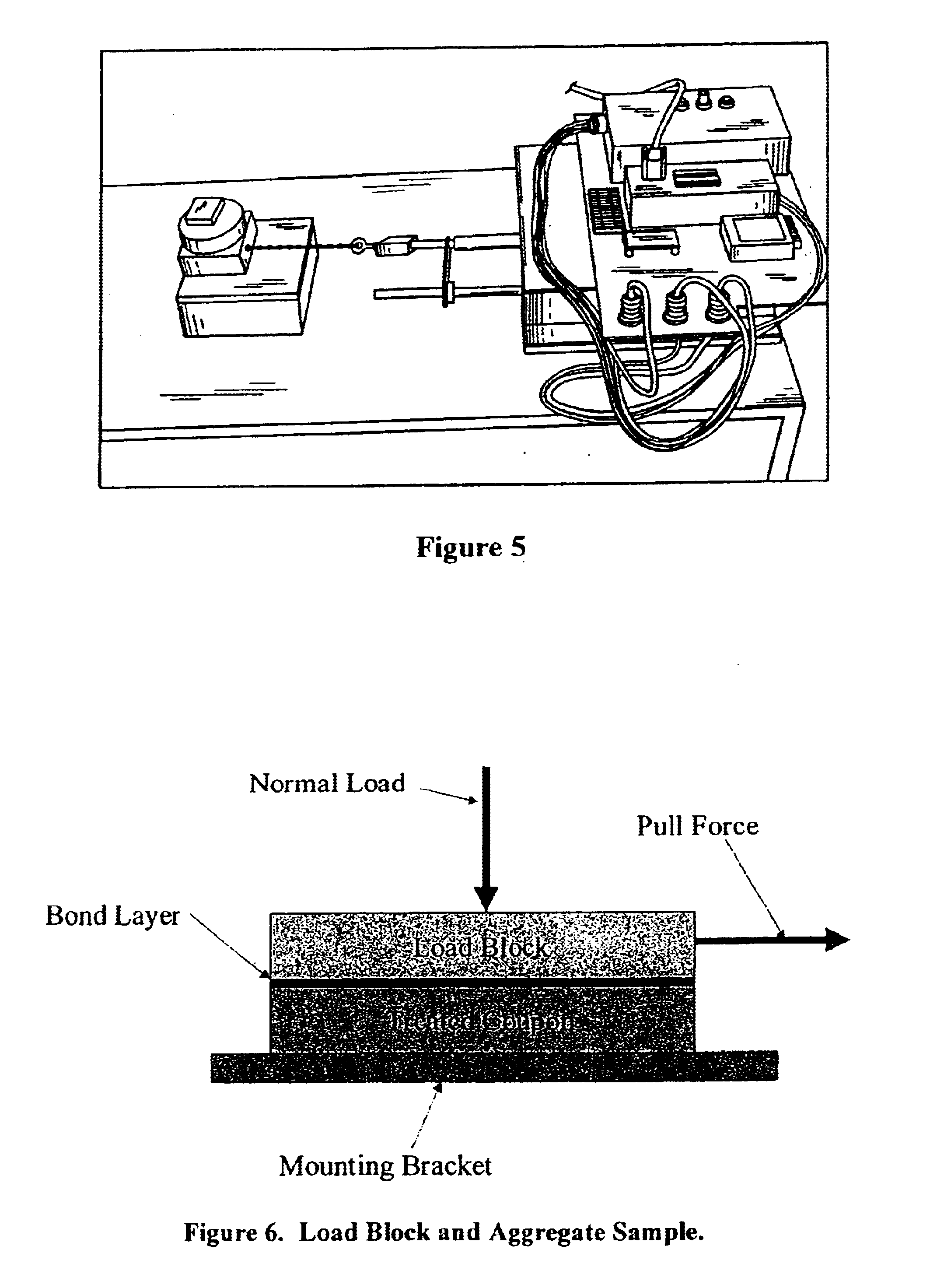Anti-icing coatings and methods
- Summary
- Abstract
- Description
- Claims
- Application Information
AI Technical Summary
Benefits of technology
Problems solved by technology
Method used
Image
Examples
example 1
Frost Growth and Ice Bond Mitigation
“Frost growth” and “ice bond mitigation” were performed to test anti-icing and residual effect. The test procedures for these follow.
In preparation for both the frost and bonding tests, aggregate samples were cut using water lubricated saws to avoid introducing any oils or other chemicals contacting the samples. A large cutoff saw was used for initial cutting and a smaller tile saw for the finish cuts.
A method was also devised to simulate the effect of water and tire action at the surface of a pavement, thereby determining how well a combination reacted to a storm event, and the potential for it to keep working through future storms. After the load simulation was completed the aggregates were left to thaw at room temperature. Once all ice was melted from the surface of the aggregates, a saturated sponge was used to wipe them clean. The sponge was passed over the aggregate surface five times. This procedure was meant to simulate the washing of the ...
example 2
In another example, an 8 foot by 200 foot test section of anti-icing composition was applied to the edge of the tarmac at the FAA Technical Center in Atlantic City. For this example, Pro-Poxy Type III DOT epoxy obtained from Unitex, in Kansas City, Mo., was used as adhesive and applied to the tarmac substrate. More particularly, the adhesive was poured onto the tarmac, and then spread and thinned. The thickness of the adhesive on the tarmac was about ⅛ inch. Approximately 7500 pounds of crushed limestone aggregate obtained from Michigan Limestone Operations, Inc. was then broadcast onto the adhesive by sprinkling the aggregate out of a bucket. The thickness of the aggregate was about ½ inch, until it was ground to about ¼ inch to about ⅜ inch. The anti-icing chemical used in conjunction with this example will be chosen at a later date by FAA. About 5 gallons of this anti-icing composition will be sprayed using a chemical or tank sprayer onto the overlay prior to winter weather. The ...
example 3
Also, connected to this test are two wear tests designed to determine how durable and resistant to wear these coatings are when installed on a pavement. MDOT personnel will perform one of these tests at the Michigan Department of Transportation (MDOT) pavement lab in Lansing, Mich. This is the standard test for aggregate wear and polishing for the State of Michigan. The other wear test will include a field test section near KRC that will monitor traffic and plowing on an actual road surface. These two tests should demonstrate are designed to prove that that overlays are durable and will not wear out rapidly.
PUM
| Property | Measurement | Unit |
|---|---|---|
| Temperature | aaaaa | aaaaa |
| Time | aaaaa | aaaaa |
| Time | aaaaa | aaaaa |
Abstract
Description
Claims
Application Information
 Login to view more
Login to view more - R&D Engineer
- R&D Manager
- IP Professional
- Industry Leading Data Capabilities
- Powerful AI technology
- Patent DNA Extraction
Browse by: Latest US Patents, China's latest patents, Technical Efficacy Thesaurus, Application Domain, Technology Topic.
© 2024 PatSnap. All rights reserved.Legal|Privacy policy|Modern Slavery Act Transparency Statement|Sitemap



